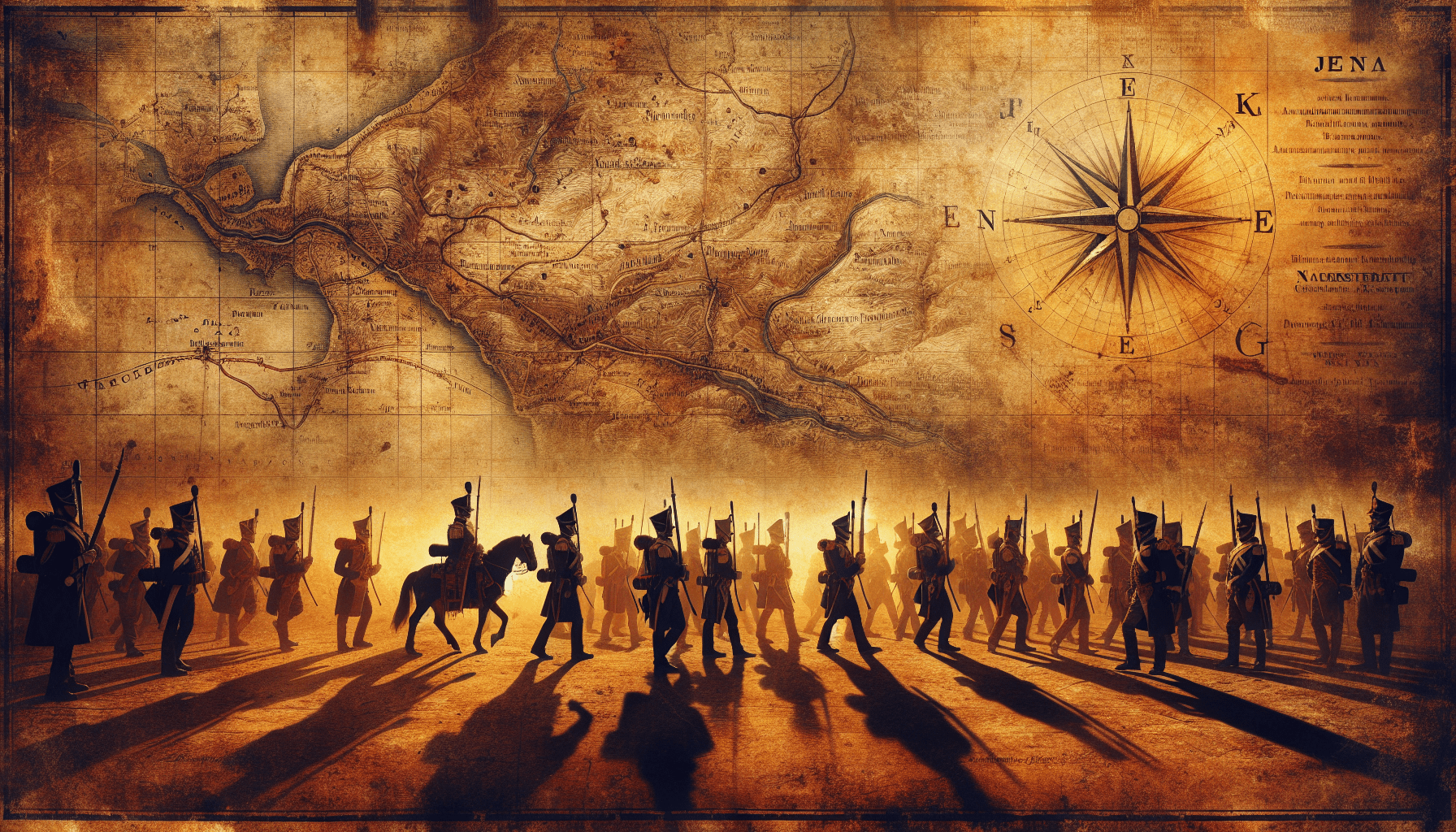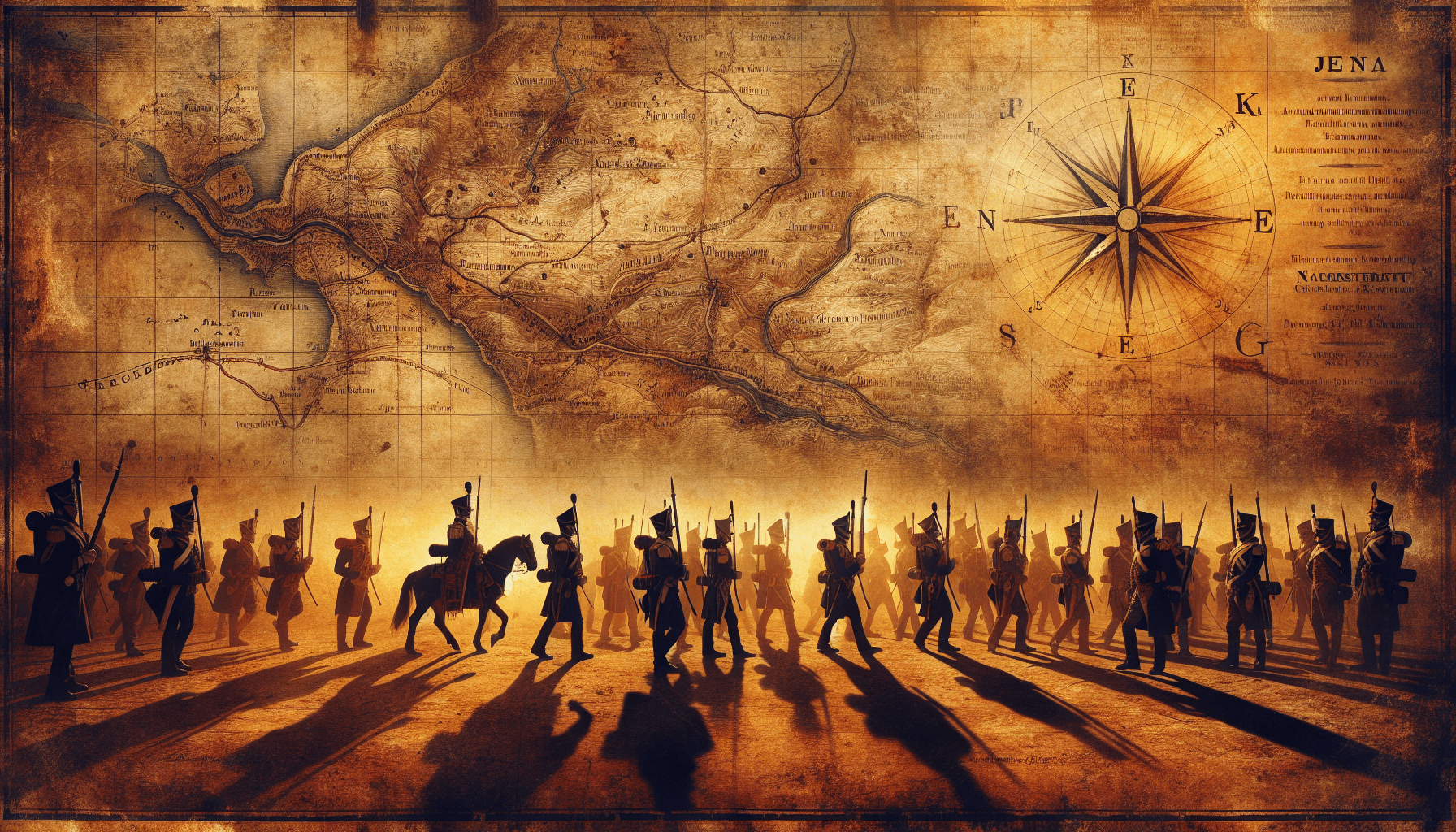The twin battles of Jena and Auerstedt, fought on 14 October 1806, marked a pivotal moment in European military history. Engaging the forces of Napoleon I of France against the Prussian Army led by Frederick William III, these battles demonstrated the dramatic consequences of military miscalculations and outdated tactics. The swift and decisive victory of Napoleon not only subjugated Prussia to French control but also altered the balance of power in Europe until the emergence of the Sixth Coalition in 1813.
This article will explore the events leading up to the battles, the strategic mobilization of both armies, and the significant moments throughout the confrontations. You will gain insight into the contrasting military capabilities of the Grand Army and the Prussian forces, as well as the innovative strategies employed by Napoleon that contributed to his ultimate success. The analysis will provide a deeper understanding of the ramifications of this conflict on the future of European geopolitics.

Overview of the Battles
Significance of the Jena–Auerstedt Battles
The battles of Jena and Auerstedt, fought on October 14, 1806, stand as pivotal points in military history. They represented not merely a clash of arms but a profound shift in the balance of power in Europe. The defeat of the Prussian Army by Napoleon’s forces extinguished the aspirations of the Kingdom of Prussia to reassert its influence on the continent. Subsequent to these battles, Prussia fell under the oppressive shadow of the French Empire, which lasted until the formation of the Sixth Coalition in 1813. These battles marked the decline of the old military doctrines and underscored the effectiveness of Napoleon’s innovative strategies and organizational prowess.
Date and Location of the Conflicts
The battles took place on the same day—October 14, 1806—on the expansive plateau west of the Saale River in what is now modern-day Germany. Jena and Auerstedt, although fought roughly 20 kilometers apart, were part of the same campaign and reflected the broader strategic maneuvers conducted by Napoleon during the War of the Fourth Coalition. The geographic and tactical considerations in these locations played critical roles in the outcomes of the engagements.
Key Participants in the Battles
The battles featured the forces of the French Empire, commanded by Emperor Napoleon Bonaparte, and the Prussian Army, under King Frederick William III. The French possessed a highly organized and experienced military, including notable figures such as Marshals Michel Ney and Louis-Nicolas Davout. On the opposing side, Prussian leadership comprised a mix of veteran soldiers, including the Duke of Brunswick and other key generals. The interplay of these commanding figures influenced the tactical decisions made during the course of the battles.
Background of the Conflict
Prelude to War: Franco-Prussian Relations
The relationship between France and Prussia had been fraught with tension for years leading up to the conflict. The end of the Napoleonic Wars in 1802 did not usher in lasting conditions of peace. Following the Treaty of Tilsit, Prussia found itself increasingly encircled and outmatched by France’s growing military hegemony in Europe. The Prussians harbored grievances about territorial losses and perceived violations of national sovereignty, setting the stage for conflict. This historical backdrop of rivalry and distrust, fueled by national ambitions and strategic interests, laid the groundwork for the war that would erupt in 1806.
The Fourth Coalition and Its Formation
The Fourth Coalition, comprising Great Britain, Russia, Prussia, and Sweden, was formed with the express purpose of countering French dominance on the continent. However, the coalition’s formation was fraught with difficulty; internal disagreements and a lack of coordinated military strategy undermined its effectiveness. The ill-fated alliance was further weakened by Prussia’s overly aggressive stance, which led to a unilateral declaration of war against France without adequate support from its allies. This precarious situation revealed deep fractures in the coalition’s unity and significantly dampened its potential for military success.
Prussian Preparations for War
Prussia’s military leadership believed mistakenly in its superiority based on past glories. Despite having eleven years of peace to prepare, the Prussian Army struggled to adapt to the rapid advancements in military tactics that had emerged in the wake of the French Revolutionary Wars. Internal political strife, coupled with an ineffective command structure, hampered efficient mobilization and leave the army inadequately prepared to engage in decisive military action against a well-coordinated enemy.
The French Army
Composition and Structure of Napoleon’s Forces
Napoleon’s Grand Army, a formidable fighting force, boasted a sophisticated command structure which allowed for rapid maneuverability and adaptation to battlefield conditions. Around 120,000 troops comprised the army, skillfully woven together through standardization and rigorous training regimes. The infantry, cavalry, and artillery units were strategically balanced to support one another in combat, enhancing the overall effectiveness of the army in execution of Napoleon’s orders.
Recent Combat Experience of the French Troops
The soldiers of Napoleon’s army were not merely conscripts; many had extensive combat experience from previous campaigns, including those in Italy and the Austro-Turkish conflicts. The familiarity of these troops with sustained operations, the hardships of war, and the professional upgrade achieved through campaigns during the past decade imbued them with a confidence that would be crucial against an adversary caught in a transitional phase of military strategy.
Strengths and Tactical Advantages of the French Army
Napoleon’s military innovations lay not only in large-scale strategies but also in the training and morale of his troops. His forces were characterized by discipline, strong leadership, and an adaptability that allowed them to exploit the weaknesses of their adversaries effectively. Utilizing formations such as columns, which could quickly shift into battle lines, and emphasizing rapid maneuvers, the French demonstrated a decisive ability to engage the enemy and dictate the pace of battle.
The Prussian Army
Structure and Command of the Prussian Forces
The Prussian Army of 1806 was organized into three main military bodies, each lacking cohesive command and underscored by a convoluted hierarchy that involved multiple layers of leadership. This fractured command structure hampered effective communication and the ability to implement coherent strategies across units. As decisions became bogged down in layers of bureaucracy, precious window opportunities for decisive action were lost.
Challenges Facing the Prussian Military
Prussia’s military faced significant challenges during the lead-up to war. The outdated assessment of battlefield capabilities, including a slow-moving and poorly coordinated army, was exacerbated by an underwhelming artillery corps and inferior firearms. These deficiencies were magnified by an absence of a unified operational plan and outdated tactical doctrines that proved inadequate against the more dynamic and flexible tactics of the French forces.
Key Figures in Prussian Leadership
The Prussian military leadership included several notable figures, such as the Duke of Brunswick and General von Scharnhorst, whose experiences in previous conflicts shaped their operational decisions. However, the age and rigidity of most commanders hampered their willingness to adopt innovative strategies or recognize the efficacy of Napoleon’s rapid, strategic movements—ultimately contributing to the Prussian army’s miscalculations during the conflict.

The Declaration of War
Ultimatum from King Frederick William III
With tensions between France and Prussia running high, King Frederick William III attempted to assert Prussian sovereignty by issuing an ultimatum to Napoleon, demanding the withdrawal of French troops from areas along the Rhine. This ultimatum was a response to what he perceived as encroaching French aggression, though it was primarily driven by internal pressures for decisive action against France.
Napoleon’s Response and Military Mobilization
Napoleon, sensing an opportunity to engage a vulnerable adversary, responded with strategic maneuvering aimed at outflanking the Prussian forces. The French military was already in motion before the official declaration of war, reflecting Napoleon’s renowned ability to preemptively position his forces and set the stage for future engagements.
The Formal Declaration of War
On October 9, 1806, following Napoleon’s refusal to accede to the ultimatum, Frederick William formally declared war against France. The decree was made hastily, without consultation from critical allies such as Russia, leading to a disjointed and isolated Prussian position. This reckless declaration of war marked the beginning of the disastrous encounters that would define the Jena–Auerstedt campaign.
Battle of Saalfeld
Initial Engagement and Tactical Maneuvering
The Battle of Saalfeld, fought on October 10, 1806, was the first significant engagement of the campaign. Here, approximately 8,500 Prussian troops, led by Prince Louis Ferdinand, sought to halt the French advance into Saxony. Despite their valiant effort to repel a larger French force of around 13,000 men, the Prussians found themselves outmaneuvered by a more experienced opponent whose tactical execution proved superior.
Prince Louis Ferdinand’s Role
Prince Louis Ferdinand demonstrated valor and strategic intent at Saalfeld, urging his men to hold their ground against overwhelming odds. However, as the battle progressed, his forces suffered significant casualties. Ultimately, he was killed during a daring cavalry charge, a loss that left the Prussian forces demoralized and showcased the personal cost of leadership in battle.
Consequences of the Battle for Prussian Morale
The outcome at Saalfeld was devastating for the Prussian Army, leading to a significant decrease in morale. With substantial losses incurred, the Prussian command now faced not only a numerical disadvantage but also the psychological impact of losing one of its key leaders. This defeat foreshadowed the greater struggles to unfold in the forthcoming battles of Jena and Auerstedt.

Battle of Jena
Early Morning Engagements and Tactical Positioning
The Battle of Jena began in the early morning hours of October 14, 1806, with French forces under Napoleon engaging the larger Prussian army positioned near Jena. Napoleon’s tactical brilliance was evident as he orchestrated attacks on both flanks of the Prussian line to disrupt their formations and gain a tactical advantage.
Key Combat Operations and Flank Maneuvers
As the battle progressed, a series of complex maneuvers unfolded. The French aimed to encircle the Prussians, leveraging their ability to move swiftly and decisively. Key operations involved engaging detrimental skirmishes on the flanks, drawing Prussian units away from the center and exposing vulnerabilities. As the French closed in on the Prussian positions, the unfolding chaos began to shift the balance of power on the battlefield.
The Turning Point of the Battle
The battle’s pivotal moment occurred as Napoleon identified opportunities to exploit the disarray within the Prussian ranks. With a decisive push against the flanks led by Marshall Bernadotte and Ney, the Prussian lines began to crumble under the twin pressures of organized attacks, signaling a critical juncture that would lead to their eventual rout. As the afternoon progressed, the overwhelming might of the French forces ensured a shattering defeat for the Prussians.
The Assault and the Final Push
Ney’s Unsolicited Attack
Marshall Ney’s decision to initiate an attack without explicit orders from Napoleon introduced a level of unpredictability to the engagement. While initially catching the Prussians by surprise, this bold maneuver quickly found Ney and his men overextended and surrounded. This unforeseen assault would later require coordinated responses from Napoleon to regain control of the situation.
The French Center and Reinforcement Strategies
As skirmishes developed across the battlefield, Napoleon rapidly initiated reinforcement strategies to stabilize his center. He commanded the Imperial Guard to hold the line while his flanking forces maneuvered to regain the momentum interrupted by Ney’s overreach. This tactical adaptation highlighted Napoleon’s capacity to maintain composure amid chaos and effectively respond to battlefield dynamics.
Landing the Decisive Blow Against Prussian Forces
With the lines of engagement shifting favorably for the French, the counterattacks against the weakened Prussian flanks coalesced into a decisive blow. The combination of disciplined infantry moves and well-timed cavalry charges culminated in the disintegration of Prussian formations. By day’s end, defeat for the Prussian Army seemed inevitable, as panic set in and formations unraveled under the relentless French pressure.
Battle of Auerstedt
Overview of the Conflict Location
The Battle of Auerstedt unfolded just north of Jena and was an equally significant engagement in the twin confrontations of October 14, 1806. While Napoleon’s forces faced the main body of the Prussian Army near Jena, General Davout’s contingent engaged with a significant Prussian force near Auerstedt, thereby complicating the situation for Prussian commanders attempting to coordinate a cohesive defense.
Engagement Progress and Key Moments
The conflict at Auerstedt featured intense combat and covered a series of fierce skirmishes marked by individual valor and significant losses on both sides. As fighting raged, the resilience of the French troops was tested, yet they managed to consolidate their lines efficiently, thanks to the superior organizational capacity of Davout’s corps in the face of overwhelming numbers.
The Outcome of Auerstedt and Its Impact
Ultimately, Auerstedt resulted in a decisive French victory comparable to that at Jena. Prussian command suffered from a lack of unified direction and strategic foresight, leading to a fragmented defense that the French were able to exploit tactically. The dual defeats at Jena and Auerstedt not only halted Prussian ambitions but also reshaped the military landscape of Europe, signaling the ascendancy of Napoleonic warfare.
Conclusion
Summary of Key Lessons Learned
The battles of Jena and Auerstedt revealed critical lessons about the importance of adaptability, unified command structures, and rapid response capabilities on the battlefield. Prussia’s failure to effectively integrate these elements into their military doctrine underscored the inadequacy of traditional strategies against an innovative adversary.
Historical Significance of the Battles
The significance of the Jena–Auerstedt battles echoes through military history as a demonstration of the effectiveness of innovative tactics and strategic thinking under pressure. They marked a turning point not just for Prussia but also in the evolution of European warfare, as the implications of Napoleon’s victories reshaped continental politics for years to come.
Enduring Legacy of the Jena–Auerstedt Conflicts
The legacy of the Jena–Auerstedt conflicts lies in their impact on subsequent military strategies and nations’ approaches to warfare. The bold tactics pioneered by Napoleon became essential references for future military leaders, while the catastrophic failures of the Prussian Army at these battles catalyzed significant reforms in their military structure that would eventually lead to the emergence of a more robust and modernized Prussian state in the subsequent decades.
